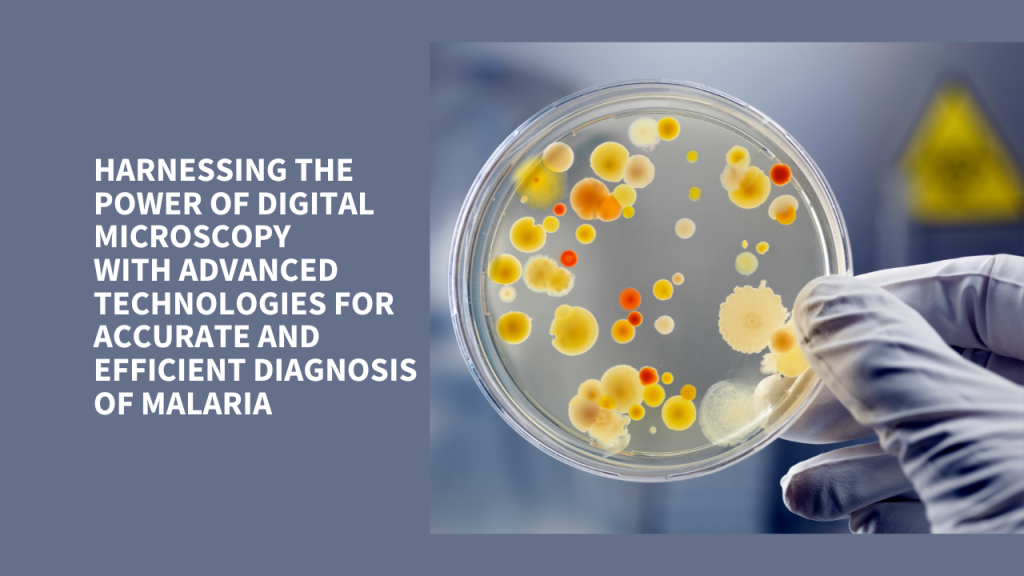In 2022, India accounted for 66% of malaria cases in the WHO South-East Asia Region as per the 2023 World Malaria Report published by the World Health Organization (WHO). While there are steps taken towards reducing the disease burden of malaria, we have a long road ahead. Early and accurate diagnosis can ensure effective management of the potential life-threatening disease. The “gold standard” for diagnosing malaria in individual patients and for epidemiologic surveys is the microscopic examination of blood smears. Therefore microscopy, the most frequently used diagnostic test plays a crucial role in malaria disease management.
Leveraging technologies to strengthen malaria microscopy diagnosis
Digital microscopy is no doubt a boon as compared to traditional microscopes, tackling challenges such as need for skilled microscopists/technicians, sample management in the process of collection to lab delivery, and turnaround time for diagnosis. Digital Microscopy when augmented with advanced technologies such as artificial intelligence, cloud computing and deep learning, can enhance capabilities in diagnosis and treatment. It brings automation, standardization, accuracy, and reduced error rates in the entire system of sample analysis while ensuring shorter turnaround times. With the newer technologies, clinicians can determine parasitic load in patient’s blood thus directing them to appropriate treatment strategies. Accuracy in diagnosis which can be achieved with AI algorithms, thus proving to be a useful tool in clinical settings. AI could reduce burden for microscopists and thus increase the feasible patient load. Integrating AI-based approaches to develop a malaria slide bank would be helpful even in the post-elimination period. Quality control and cross verification of sample slides is also a burden at state level, that can be eased using AI. Investments in artificial intelligence-based microscopy approaches will help to improve diagnostic sensitivity and accuracy, which is the prerequisite for malaria elimination. Deep learning models can enhance image segmentation, image enhancement, and particle tracking in malaria detection. Microscopists may not be adept at recognising distinct stages of malaria parasites in blood smears due to a lack of training and expertise. Deep learning-based malaria microscopy can overcome this barrier. Cloud computing can help us with understanding malaria data which can be used for research, risk assessment, treatment strategies and elimination efforts. Cloud can further enhance diagnosis efforts especially for remote diagnosis and regions where accessibility of healthcare is compromised. Technologies in malaria management have shown extraordinary performance and application in microscopic image analysis due to high speed, accuracy, flexibility, and low cost.
Micalys – Strengthening Malaria Microscopy
Medprime Technologies’ is making strides in malaria diagnosis with Micalys, an automated microscopy platform that is being developed to assist and eliminate delay in malaria diagnosis and possible degradation of the sample during transit. Micalys will be transformative when paired with an AI-based algorithm, that not only serves the purpose of diagnosis but also be used for identification of the parasite species, the stage of infection and parasitic load. Micalys will be embedded with IHF-Backed innovation that will help in improving the efficiency and accuracy of malaria diagnosis, which is the need of the hour in reducing malaria disease burden. The embedded technology will help in making malaria diagnosis more accessible and cost-effective which is important for a country like India where population is high, and accessibility of treatment is difficult. Micalys will address the needs of malaria disease management and ensure it can reach the hinterlands where it can provide respite in malaria management.
In conclusion, digital microscopy, and technologies such as artificial intelligence and cloud computing could profoundly contribute to malaria diagnosis in elimination settings. Action for malaria elimination is on the rise and as reported in 2021, 40 previously malaria-endemic countries reported no malaria cases, which is a clear indicator of moving forward in malaria elimination. This success can be attributed to many important factors, one being improvement of diagnosis with advanced technologies embedded in digital microscopy. In our fight against malaria and its eradication, what we need is next generation of smart malaria diagnostics that holds the key in effective malaria treatment and surveillance to help stop its spread.
